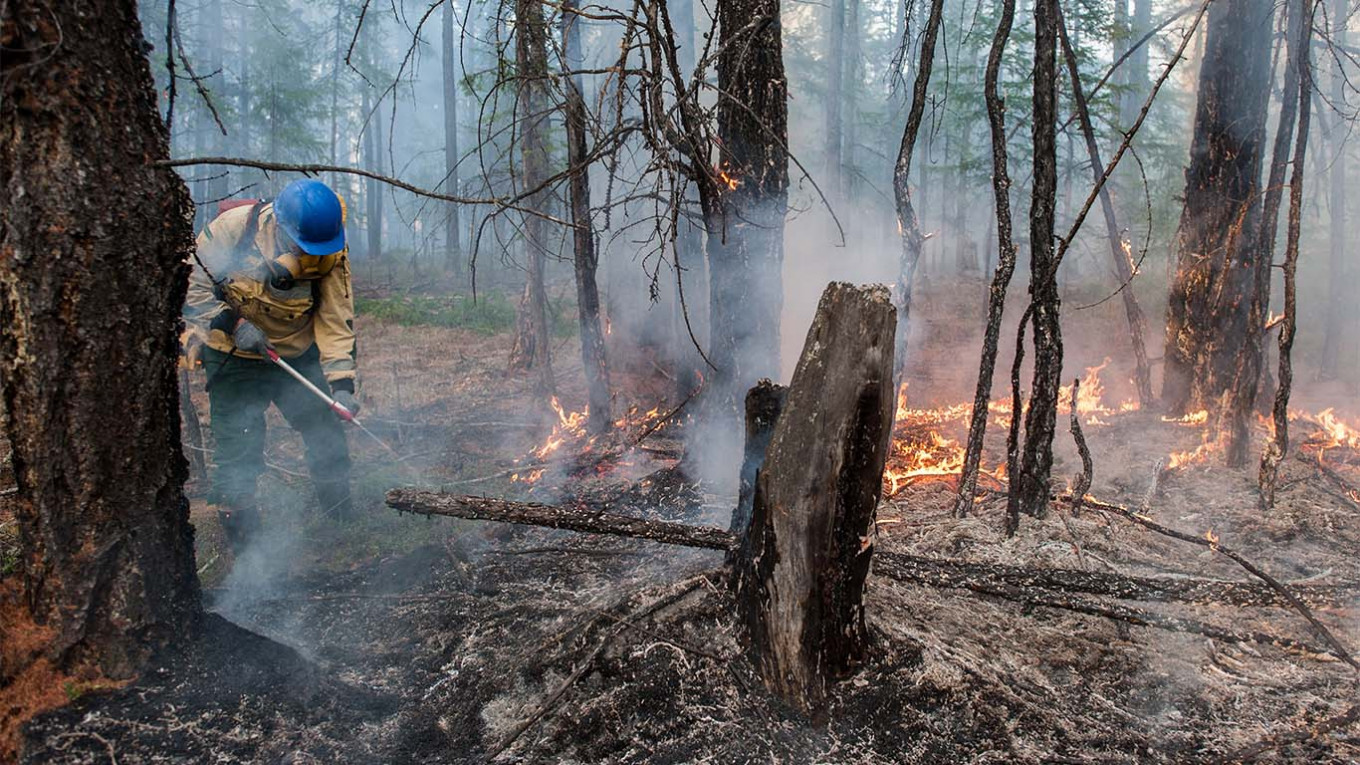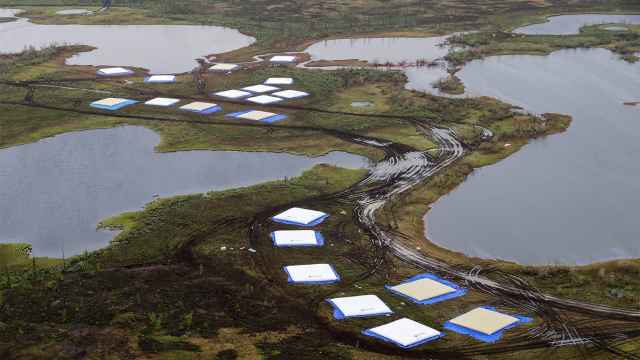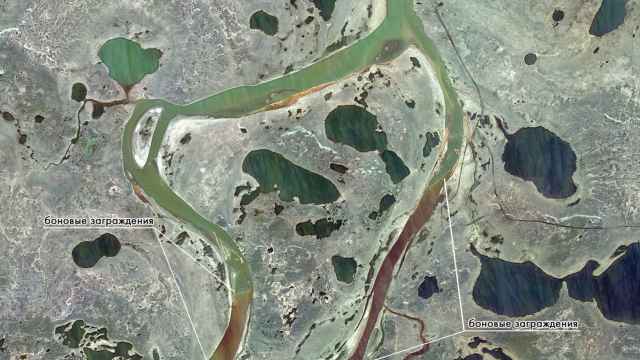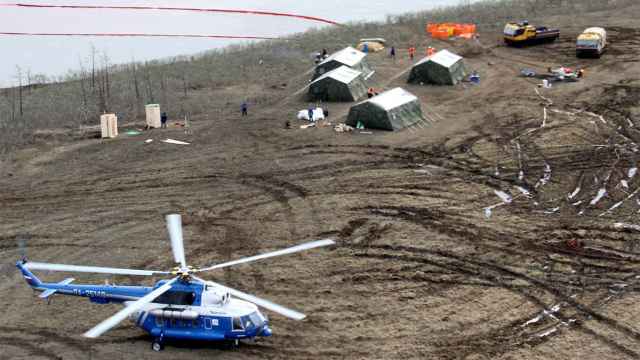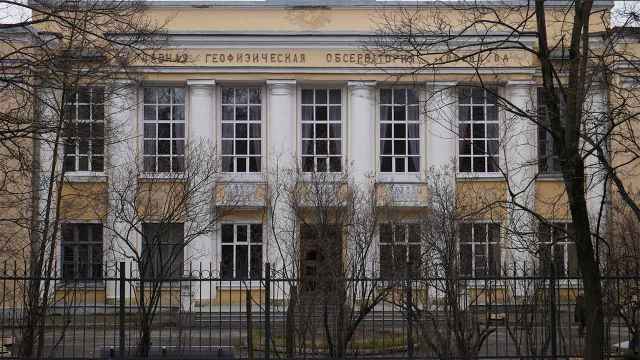Forest fires in Siberia have grown at least threefold amid a record-breaking heatwave in the region, according to Russia’s agency for aerial forest fire management Aviales.
The figures state that 1.37 million hectares (3.4 million acres) were burning in areas unreachable to firefighters as of midnight Monday.
Less than 450,000 hectares (1.1 million acres) had been burning in the area last week.
More than 80% of the blazes hit the republic of Sakha, the region where the town of Verkhoyansk reported possibly the hottest-ever temperature above the Arctic Circle of 38 degrees Celsius earlier in June.
The isolated town’s previous record high temperature of 37.3 C was measured in July 1988. The record high temperature for any location north of the Arctic Circle of 37.8 C was set in Fort Yukon, Alaska, in June 1915.
Other parts of Siberia saw higher-than-average temperatures this spring, with some towns in the Arctic Circle beating their previous records by double digits and temperatures reaching the mid-20s and low-30s. Temperatures in May alone were up to 10 C warmer than average.
In addition to the wildfires, a recent massive oil spill near the Arctic city of Norilsk is believed to have been caused by melting permafrost that has accelerated with the region’s warming climate.
The Associated Press reported a nearly fivefold increase in forest fire coverage Saturday.
Districts in six Russian regions including the republic of Sakha have introduced states of emergency in connection with the fires.
Around half of Russia’s forest coverage is located in remote areas where firefighters are allowed to let fires rage if they don’t threaten nearby residents or businesses. Environmental activists say that 90% of Russia’s 2019 wildfires had burned in these areas.
The Natural Resources and Environment Ministry is seeking to almost entirely do away with the “control zones” where wildfires are allowed to burn, the Kommersant business daily reported last week.
A Message from The Moscow Times:
Dear readers,
We are facing unprecedented challenges. Russia's Prosecutor General's Office has designated The Moscow Times as an "undesirable" organization, criminalizing our work and putting our staff at risk of prosecution. This follows our earlier unjust labeling as a "foreign agent."
These actions are direct attempts to silence independent journalism in Russia. The authorities claim our work "discredits the decisions of the Russian leadership." We see things differently: we strive to provide accurate, unbiased reporting on Russia.
We, the journalists of The Moscow Times, refuse to be silenced. But to continue our work, we need your help.
Your support, no matter how small, makes a world of difference. If you can, please support us monthly starting from just $2. It's quick to set up, and every contribution makes a significant impact.
By supporting The Moscow Times, you're defending open, independent journalism in the face of repression. Thank you for standing with us.
Remind me later.


